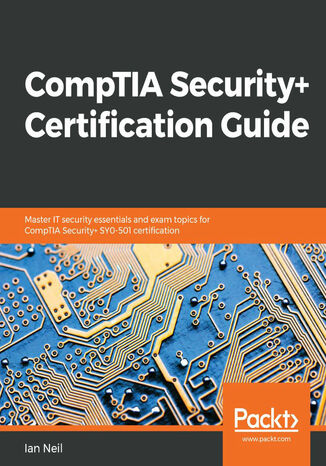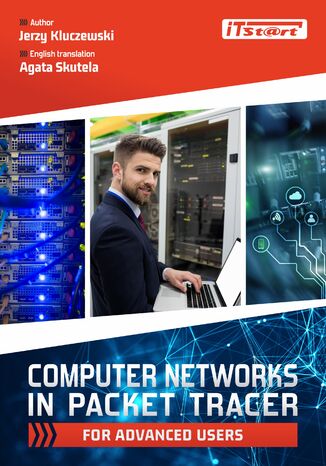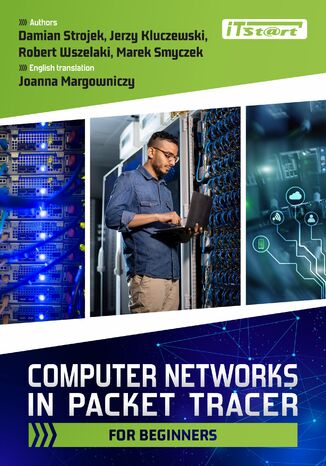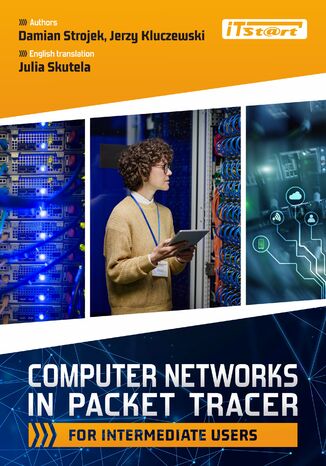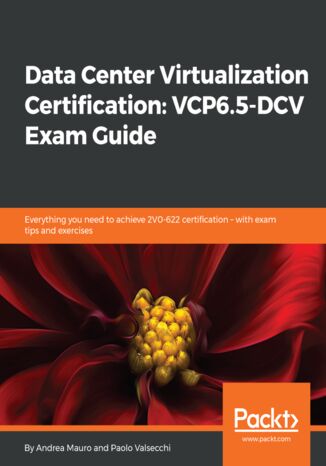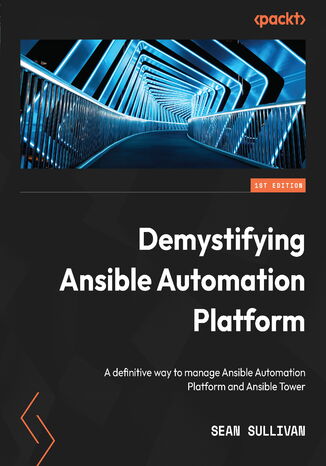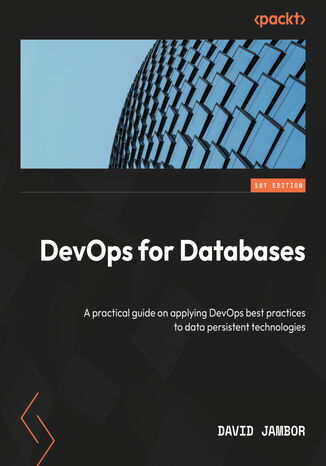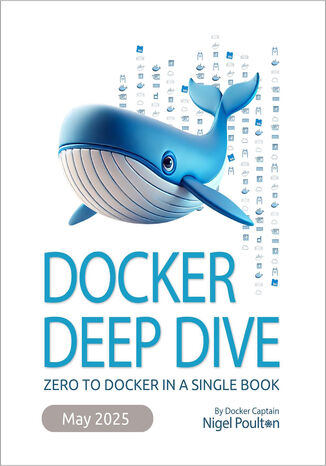Kategorie
Ebooki
-
Biznes i ekonomia
- Bitcoin
- Bizneswoman
- Coaching
- Controlling
- E-biznes
- Ekonomia
- Finanse
- Giełda i inwestycje
- Kompetencje osobiste
- Komputer w biurze
- Komunikacja i negocjacje
- Mała firma
- Marketing
- Motywacja
- Multimedialne szkolenia
- Nieruchomości
- Perswazja i NLP
- Podatki
- Polityka społeczna
- Poradniki
- Prezentacje
- Przywództwo
- Public Relation
- Raporty, analizy
- Sekret
- Social Media
- Sprzedaż
- Start-up
- Twoja kariera
- Zarządzanie
- Zarządzanie projektami
- Zasoby ludzkie (HR)
-
Dla dzieci
-
Dla młodzieży
-
Edukacja
-
Encyklopedie, słowniki
-
E-prasa
- Architektura i wnętrza
- BHP
- Biznes i Ekonomia
- Dom i ogród
- E-Biznes
- Ekonomia i finanse
- Ezoteryka
- Finanse
- Finanse osobiste
- Firma
- Fotografia
- Informatyka
- Kadry i płace
- Kobieca
- Komputery, Excel
- Księgowość
- Kultura i literatura
- Naukowe i akademickie
- Ochrona środowiska
- Opiniotwórcze
- Oświata
- Podatki
- Podróże
- Psychologia
- Religia
- Rolnictwo
- Rynek książki i prasy
- Transport i Spedycja
- Zdrowie i uroda
-
Historia
-
Informatyka
- Aplikacje biurowe
- Bazy danych
- Bioinformatyka
- Biznes IT
- CAD/CAM
- Digital Lifestyle
- DTP
- Elektronika
- Fotografia cyfrowa
- Grafika komputerowa
- Gry
- Hacking
- Hardware
- IT w ekonomii
- Pakiety naukowe
- Podręczniki szkolne
- Podstawy komputera
- Programowanie
- Programowanie mobilne
- Serwery internetowe
- Sieci komputerowe
- Start-up
- Systemy operacyjne
- Sztuczna inteligencja
- Technologia dla dzieci
- Webmasterstwo
-
Inne
-
Języki obce
-
Kultura i sztuka
-
Lektury szkolne
-
Literatura
- Antologie
- Ballada
- Biografie i autobiografie
- Dla dorosłych
- Dramat
- Dzienniki, pamiętniki, listy
- Epos, epopeja
- Esej
- Fantastyka i science-fiction
- Felietony
- Fikcja
- Humor, satyra
- Inne
- Klasyczna
- Kryminał
- Literatura faktu
- Literatura piękna
- Mity i legendy
- Nobliści
- Nowele
- Obyczajowa
- Okultyzm i magia
- Opowiadania
- Pamiętniki
- Podróże
- Poemat
- Poezja
- Polityka
- Popularnonaukowa
- Powieść
- Powieść historyczna
- Proza
- Przygodowa
- Publicystyka
- Reportaż
- Romans i literatura obyczajowa
- Sensacja
- Thriller, Horror
- Wywiady i wspomnienia
-
Nauki przyrodnicze
-
Nauki społeczne
-
Podręczniki szkolne
-
Popularnonaukowe i akademickie
- Archeologia
- Bibliotekoznawstwo
- Filmoznawstwo
- Filologia
- Filologia polska
- Filozofia
- Finanse i bankowość
- Geografia
- Gospodarka
- Handel. Gospodarka światowa
- Historia i archeologia
- Historia sztuki i architektury
- Kulturoznawstwo
- Lingwistyka
- Literaturoznawstwo
- Logistyka
- Matematyka
- Medycyna
- Nauki humanistyczne
- Pedagogika
- Pomoce naukowe
- Popularnonaukowa
- Pozostałe
- Psychologia
- Socjologia
- Teatrologia
- Teologia
- Teorie i nauki ekonomiczne
- Transport i spedycja
- Wychowanie fizyczne
- Zarządzanie i marketing
-
Poradniki
-
Poradniki do gier
-
Poradniki zawodowe i specjalistyczne
-
Prawo
- BHP
- Historia
- Kodeks drogowy. Prawo jazdy
- Nauki prawne
- Ochrona zdrowia
- Ogólne, kompendium wiedzy
- Podręczniki akademickie
- Pozostałe
- Prawo budowlane i lokalowe
- Prawo cywilne
- Prawo finansowe
- Prawo gospodarcze
- Prawo gospodarcze i handlowe
- Prawo karne
- Prawo karne. Przestępstwa karne. Kryminologia
- Prawo międzynarodowe
- Prawo międzynarodowe i zagraniczne
- Prawo ochrony zdrowia
- Prawo oświatowe
- Prawo podatkowe
- Prawo pracy i ubezpieczeń społecznych
- Prawo publiczne, konstytucyjne i administracyjne
- Prawo rodzinne i opiekuńcze
- Prawo rolne
- Prawo socjalne, prawo pracy
- Prawo Unii Europejskiej
- Przemysł
- Rolne i ochrona środowiska
- Słowniki i encyklopedie
- Zamówienia publiczne
- Zarządzanie
-
Przewodniki i podróże
- Afryka
- Albumy
- Ameryka Południowa
- Ameryka Środkowa i Północna
- Australia, Nowa Zelandia, Oceania
- Austria
- Azja
- Bałkany
- Bliski Wschód
- Bułgaria
- Chiny
- Chorwacja
- Czechy
- Dania
- Egipt
- Estonia
- Europa
- Francja
- Góry
- Grecja
- Hiszpania
- Holandia
- Islandia
- Litwa
- Łotwa
- Mapy, Plany miast, Atlasy
- Miniprzewodniki
- Niemcy
- Norwegia
- Podróże aktywne
- Polska
- Portugalia
- Pozostałe
- Przewodniki po hotelach i restauracjach
- Rosja
- Rumunia
- Słowacja
- Słowenia
- Szwajcaria
- Szwecja
- Świat
- Turcja
- Ukraina
- Węgry
- Wielka Brytania
- Włochy
-
Psychologia
- Filozofie życiowe
- Kompetencje psychospołeczne
- Komunikacja międzyludzka
- Mindfulness
- Ogólne
- Perswazja i NLP
- Psychologia akademicka
- Psychologia duszy i umysłu
- Psychologia pracy
- Relacje i związki
- Rodzicielstwo i psychologia dziecka
- Rozwiązywanie problemów
- Rozwój intelektualny
- Sekret
- Seksualność
- Uwodzenie
- Wygląd i wizerunek
- Życiowe filozofie
-
Religia
-
Sport, fitness, diety
-
Technika i mechanika
Audiobooki
-
Biznes i ekonomia
- Bitcoin
- Bizneswoman
- Coaching
- Controlling
- E-biznes
- Ekonomia
- Finanse
- Giełda i inwestycje
- Kompetencje osobiste
- Komunikacja i negocjacje
- Mała firma
- Marketing
- Motywacja
- Nieruchomości
- Perswazja i NLP
- Podatki
- Polityka społeczna
- Poradniki
- Prezentacje
- Przywództwo
- Public Relation
- Sekret
- Social Media
- Sprzedaż
- Start-up
- Twoja kariera
- Zarządzanie
- Zarządzanie projektami
- Zasoby ludzkie (HR)
-
Dla dzieci
-
Dla młodzieży
-
Edukacja
-
Encyklopedie, słowniki
-
E-prasa
-
Historia
-
Informatyka
-
Inne
-
Języki obce
-
Kultura i sztuka
-
Lektury szkolne
-
Literatura
- Antologie
- Ballada
- Biografie i autobiografie
- Dla dorosłych
- Dramat
- Dzienniki, pamiętniki, listy
- Epos, epopeja
- Esej
- Fantastyka i science-fiction
- Felietony
- Fikcja
- Humor, satyra
- Inne
- Klasyczna
- Kryminał
- Literatura faktu
- Literatura piękna
- Mity i legendy
- Nobliści
- Nowele
- Obyczajowa
- Okultyzm i magia
- Opowiadania
- Pamiętniki
- Podróże
- Poezja
- Polityka
- Popularnonaukowa
- Powieść
- Powieść historyczna
- Proza
- Przygodowa
- Publicystyka
- Reportaż
- Romans i literatura obyczajowa
- Sensacja
- Thriller, Horror
- Wywiady i wspomnienia
-
Nauki przyrodnicze
-
Nauki społeczne
-
Popularnonaukowe i akademickie
-
Poradniki
-
Poradniki zawodowe i specjalistyczne
-
Prawo
-
Przewodniki i podróże
-
Psychologia
- Filozofie życiowe
- Komunikacja międzyludzka
- Mindfulness
- Ogólne
- Perswazja i NLP
- Psychologia akademicka
- Psychologia duszy i umysłu
- Psychologia pracy
- Relacje i związki
- Rodzicielstwo i psychologia dziecka
- Rozwiązywanie problemów
- Rozwój intelektualny
- Sekret
- Seksualność
- Uwodzenie
- Wygląd i wizerunek
- Życiowe filozofie
-
Religia
-
Sport, fitness, diety
-
Technika i mechanika
Kursy video
-
Bazy danych
-
Big Data
-
Biznes, ekonomia i marketing
-
Cyberbezpieczeństwo
-
Data Science
-
DevOps
-
Dla dzieci
-
Elektronika
-
Grafika/Wideo/CAX
-
Gry
-
Microsoft Office
-
Narzędzia programistyczne
-
Programowanie
-
Rozwój osobisty
-
Sieci komputerowe
-
Systemy operacyjne
-
Testowanie oprogramowania
-
Urządzenia mobilne
-
UX/UI
-
Web development
-
Zarządzanie
Podcasty
- Ebooki
- Sieci komputerowe
- Budowa sieci
Budowa sieci
CompTIA Security+ is a worldwide certification that establishes the fundamental knowledge required to perform core security functions and pursue an IT security career. CompTIA Security+ Certification Guide is a best-in-class exam study guide that covers all of CompTIA Security+ 501 exam objectives. It is authored by Ian Neil, who is a world-class trainer of CompTIA Security+ 501. Packed with self-assessment scenarios and realistic exam questions, this guide will help you master the core concepts to succeed in the exam the first time you take it. Using relevant examples, you will learn all the important security fundamentals from Certificates and Encryption to Identity and Access Management concepts. You will then dive into the important domains of the exam; namely, threats, attacks and vulnerabilities, technologies and tools, architecture and design, risk management, and cryptography and Public Key Infrastructure (PKI). This book comes with over 600 practice questions with detailed explanation that is at the exam level and also includes two mock exams to help you with your study plan. This guide will ensure that encryption and certificates are made easy for you.
Computer Networks in Packet Tracer for advanced users
The book: “COMPUTER NETWORKS IN PACKET TRACER FOR ADVANCED USERS” is a collection of scenarios and network simulations for users who already have at least basic knowledge of computer networks and experience in the work associated with the administration of basic devices, as well as management of network architecture. The simulations were prepared in such a way as to develop the knowledge already presented in the previous books of Our Publishing House by Jerzy Kluczewski. The second goal, is to popularize the world-famous Packet Tracer program. This book is an excellent resource for students, undergraduates, and participants and graduates of CISCO CCNA networking courses. The themes of the book are very extensive and varied. Multiuser mode visualization, Bluetooth connections, cellular networks, WLAN controllers, industrial routers, IPV6 protocol, are just a few selected issues for which the author has prepared scenarios and ready-made simulation files that can be downloaded from the publisher's website. We encourage you to open the book and browse the table of contents for a broad overview of this book. The author of the publication is Jerzy Kluczewski, a long-time CISCO CCNA Academy instructor. He already has an extensive body of work in the form of published books on information technology. He gained his experience working in industry, and is currently a lecturer at the Gdansk School of Banking. Translation: Agata Skutela an experienced English teacher in Complex of Technical and General Schools in Tarnowskie Góry. Apart from English language she has also been teaching technical English. She is really into teaching and eager to expand her knowledge and workshop to be able to teach the best as she can.
Computer Networks in Packet Tracer for beginners
Damian Strojek, Robert Wszelaki, Marek Smyczek, Jerzy KLuczewski
The book: “COMPUTER NETWORKS IN PACKET TRACER FOR BEGINNERS" provides advice for people who want to learn about the operation of networks and the hardware that makes up today's network architecture. Beginners will learn how to download the simulator software and how to start working with it. The reader will find here the basics of configuring network devices. He will learn network services such as: TELNET, SSH, FTP, EMAIL, DHCP, DNS and routing protocols RIP, EIGRP, OSPF. Learn how to design and deploy virtual VLAN networks. The authors, describing the issues of administering computer networks, use many examples and exercises. The book is an updated compilation of our Packet Tracer publications for CISCO courses, has a described, changed interface of the currently latest Packet Tracer software and contains a set of new examples and exercises. The authors of this book are an intergenerational and interdisciplinary team. A talented student of the School of Communication in Gdańsk, Damian Strojek. His passion is computer networks, he has a set of CCNA R&S certificates and is in the middle of the CCNA Security educational path. Jerzy Kluczewski, long-time instructor of the CISCO CCNA Academy. His authorial achievements already include several books on the Packet Tracer simulator. He gained his experience while working in industry, currently he is a lecturer at the WSB University in Gdańsk. Robert Wszelaki is passionate about networking and programming. He completed a full CISCO CCNA course. He is a graduate of ZS1 in Piekary Śląskie, currently studying computer science at the Faculty of Automatic Control, Electronics and Computer Science of the Silesian University of Technology. Marek Smyczek is an experienced teacher of IT and electrical subjects, and at the same time an instructor of the CISCO CCNA program. He is the author and editor of several dozen publications in the fields of electronics and computer science. Translations: Joanna Margowniczy English teacher at Primary School No. 13 in Jaworzno and ZDZ in Sosnowiec, international IT ESSENTIALS instructor, OKE examiner.
Computer Networks in Packet Tracer for intermediate users
Damian Strojek, Jerzy Kluczewski
The book: “COMPUTER NETWORKS IN PACKET TRACER FOR INTERMEDIATE USERS” is designed for people who want to expand their skills and knowledge in the field of managing LAN and WAN networks. The reader finds here descriptions and practical exercises on configuring CISCO devices. It is a continuation of the first book with the same title. The authors have adopted the principle: minimum of theory, maximum of practical examples which will enable the reader to learn how to administer ICT networks in many complex device configurations without the need to purchase expensive CISCO equipment. The content of the book covers the basics of configuring protocols, services and network techniques such as: dynamic routing RIP, EGIRP, OSPF, eBGP, static routing, access control lists VoIP, STP, RS,VTP, FRAME RELAY, PPP, PAP and CHAP authentication RADIUS, NETFLOW, NAT, L2NAT, VPN tuneling. This part also includes configuring multilayer switches 3560-24PS and 3650-24PS. The authors of this book are an intergenerational and interdisciplinary team. Talented student of the Communications School Complex in Gdansk Damian Strojek. His passion is computer networks, and he holds certifications CCNA R&S and CCNA Security. Jerzy Kluczewski, a long-time CISCO CCNA Academy instructor. He already has several book publications to his credit about the Packet Tracer simulator. He gained his experience while working in industry and is currently a lecturer at the Gdansk School of Banking. Translation: a very talented student of applied linguistics at Silesian University in Katowice – Julia Skutela. She has been studying English and Russian to become a professional translator. Eager to expand her knowledge and building a workshop of the translator she has decided to raise up to the challenge of translating the following book into English.
This exam guide enables you to install, configure, and manage the vSphere 6.5 infrastructure in all its components: vCenter Server, ESXi hosts, and virtual machines, while helping you to prepare for the industry standard certification.This data center book will assist you in automating administration tasks and enhancing your environment’s capabilities. You will begin with an introduction to all aspects related to security, networking, and storage in vSphere 6.5. Next, you will learn about resource management and understand how to back up and restore the vSphere 6.5 infrastructure. As you advance, you will also cover troubleshooting, deployment, availability, and virtual machine management. This is followed by two mock tests that will test your knowledge and challenge your understanding of all the topics included in the exam.By the end of this book, you will not only have learned about virtualization and its techniques, but you’ll also be prepared to pass the VCP6.5-DCV (2V0-622) exam.
While you can use any automation software to simplify task automation, scaling automation to suit your growing business needs becomes difficult using only a command-line tool. Ansible Automation Platform standardizes how automation is deployed, initiated, delegated, and audited, and this comprehensive guide shows you how you can simplify and scale its management.The book starts by taking you through the ways to get Ansible Automation Platform installed, their pros and cons, and the initial configuration. You’ll learn about each object in the platform, how it interacts with other objects, as well as best practices for defining and managing objects to save time. You’ll see how to maintain the created pieces with infrastructure as code. As you advance, you’ll monitor workflows with CI/CD playbooks and understand how Ansible Automation Platform integrates with many other services such as GitLab and GitHub.By the end of this book, you’ll have worked through real-world examples to make the most of the platform while learning how to manipulate, manage, and deploy any playbook to Ansible Automation Platform.
In today's rapidly evolving world of DevOps, traditional silos are a thing of the past. Database administrators are no longer the only experts; site reliability engineers (SREs) and DevOps engineers are database experts as well. This blurring of the lines has led to increased responsibilities, making members of high-performing DevOps teams responsible for end-to-end ownership. This book helps you master DevOps for databases, making it a must-have resource for achieving success in the ever-changing world of DevOps.You’ll begin by exploring real-world examples of DevOps implementation and its significance in modern data-persistent technologies, before progressing into the various types of database technologies and recognizing their strengths, weaknesses, and commonalities. As you advance, the chapters will teach you about design, implementation, testing, and operations using practical examples, as well as common design patterns, combining them with tooling, technology, and strategies for different types of data-persistent technologies. You’ll also learn how to create complex end-to-end implementation, deployment, and cloud infrastructure strategies defined as code.By the end of this book, you’ll be equipped with the knowledge and tools to design, build, and operate complex systems efficiently.
Docker Deep Dive. Zero to Docker in a single book - Fifth Edition
Docker Deep Dive provides a comprehensive introduction to container technology and Docker’s essential role in modern software development. It covers installation across platforms and presents both developer and operational perspectives to build a solid foundation. Early chapters explain container basics, Docker architecture, and key ecosystem standards.The book then explores advanced technical topics including the Docker Engine, image and container management, application containerization, and multi-container apps with Docker Compose. It guides readers through deploying and managing Docker Swarm clusters and introduces emerging areas like WebAssembly containers and AI workloads with Docker Model Runner.Extensive coverage of networking, persistent storage, and security equips readers with enterprise-grade skills for deploying and maintaining containerized applications. The practical approach ensures confidence in implementing Docker solutions for development and production environments.This newly updated edition includes a brand-new chapter on Docker Model Runner with a full AI LLM project, updates to BuildKit, buildx, Docker Build Cloud, debugging tools, WebAssembly content, and a streamlined Docker Swarm chapter.

